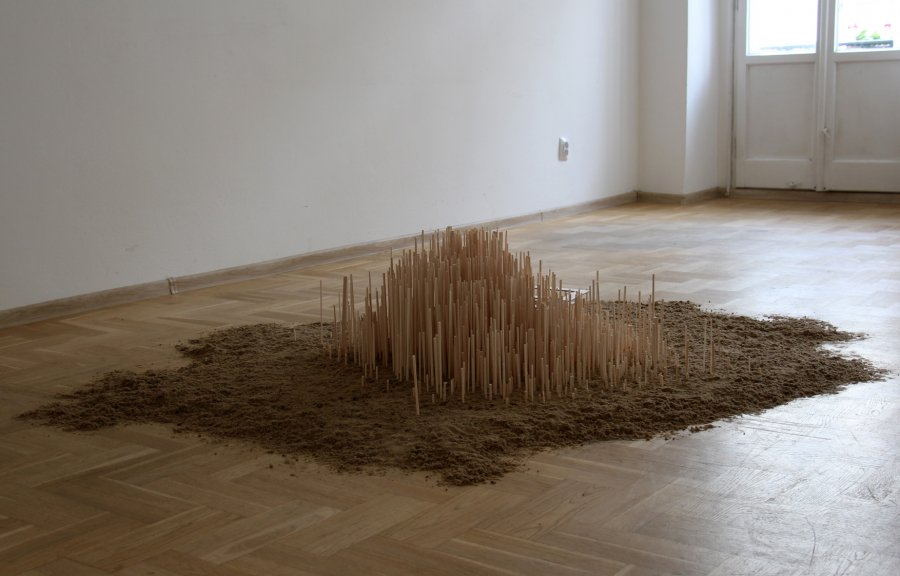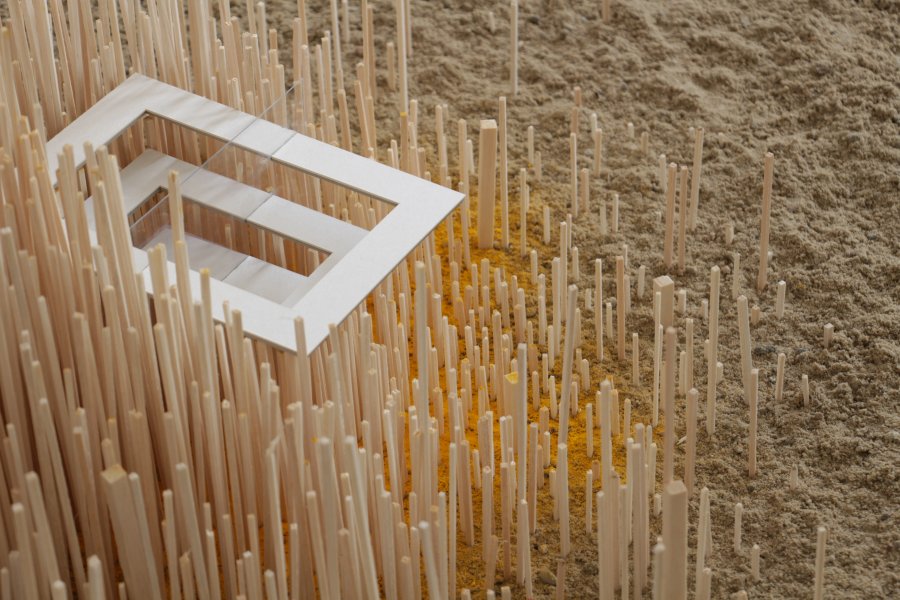The deep air of still things consists of a sculpture placed on the ground and a photograph representing it in its context of exhibition in dialogue with four drawings from ZONE. The main sculpture is presented as a graphic modeling of a forest crushed by an architecture reminiscent of a forum cut in two by a transparent border. The whole unfolds on a sandy territory which suggests that it can still expand. By comparing the sculpture to its representation in photographic form, we notice that a task made up of yellow pigments has spread under miniaturized architecture. What seems to have been captured by the image continues to mutate. The deep air of still things is inspired by the situation of the Bialowieza forest. The uniqueness of this plant heritage lies in its double identity. On the one hand, Poland liberalizes the cutting of trees for economic reasons; on the other, Belarus promotes tourism there to support its cultural and ideological dimension. If today these two political authorities seem to be able to regulate the future of Bialowieza, what impact will their respective directives really have in the long term? Combining the rhythm of the vertical lines of balsa sticks and their profusion in space, we understand that the forest is here shown as an autonomous organism which evolves in its own temporality. Only the forum seems capable of constraining the forest under its own weight. However, the tension between the different forces does not give any advantage to any of them. All are subject to the same struggle between precariousness and resistance.
Guillaume Jezy
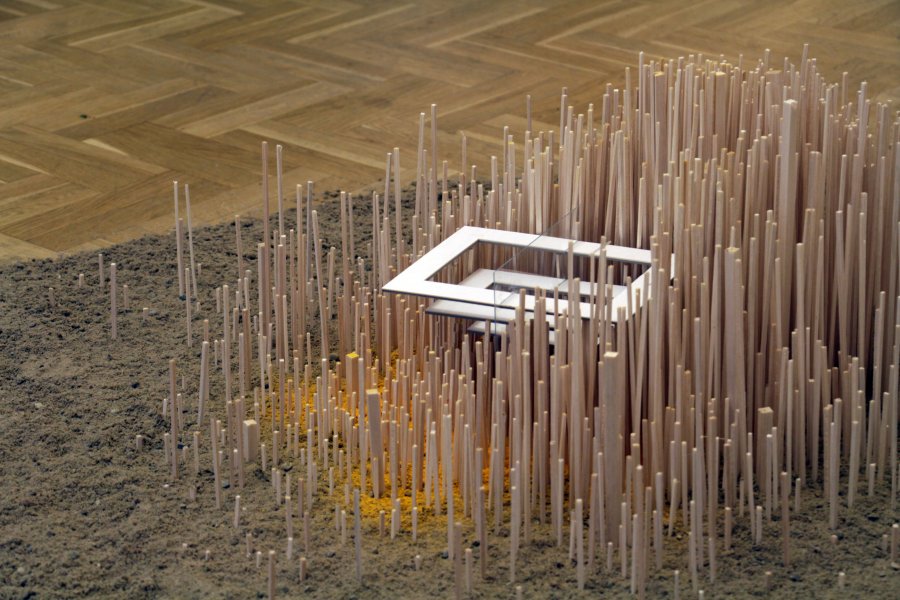
Guillaume Jezy / Jezy Knez, «L'air profond des choses immobiles», 2017, balsa, cardboard, synthetic glass, pigment, sand, print on tarpaulin, photographie : Jérémy Knez
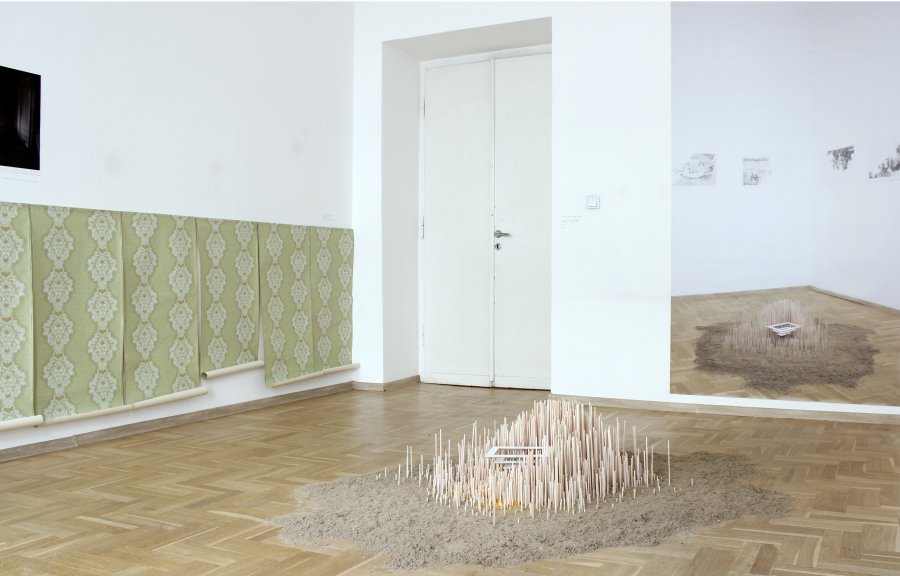
Guillaume Jezy / Jezy Knez, «L'air profond des choses immobiles», 2017, balsa, cardboard, synthetic glass, pigment, sand, print on tarpaulin, with the installation of Geneviève Cadieux-Langlois, photographie : Jérémy Knez
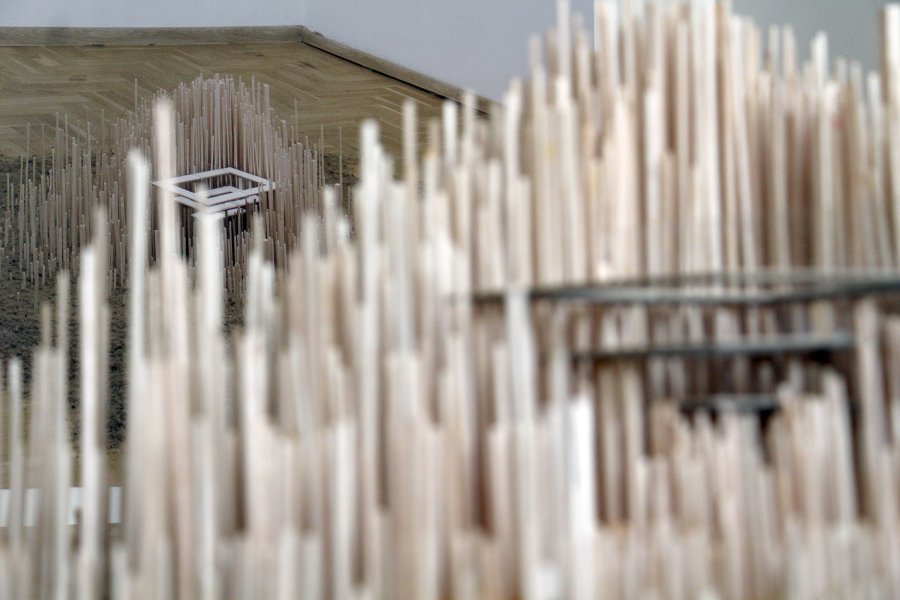
Guillaume Jezy / Jezy Knez, «L'air profond des choses immobiles», 2017, balsa, cardboard, synthetic glass, pigment, sand, print on tarpaulin, photographie : Jérémy Knez
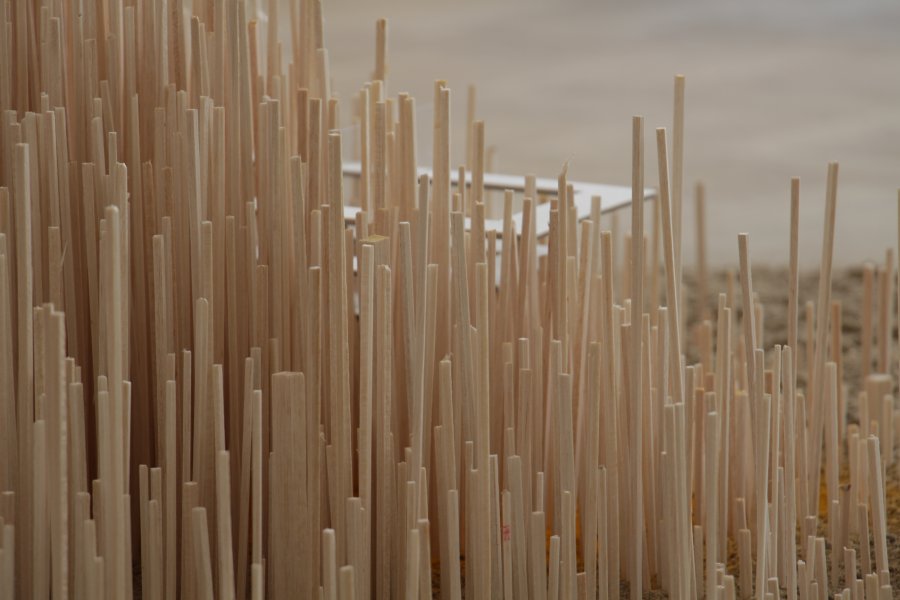
Guillaume Jezy / Jezy Knez, «L'air profond des choses immobiles», 2017, balsa, cardboard, synthetic glass, pigment, sand, print on tarpaulin, photographie : Jérémy Knez
The deep air of still things, 2017
sculpture : 35x110x180cm, photography : 160x260cm Belarusian house Warsaw invited by galerie Fontaine presented as part of the group exhibition Area outside, ed. 1 following a research residency in the Polish and Belarusian forest of Bialowieza
